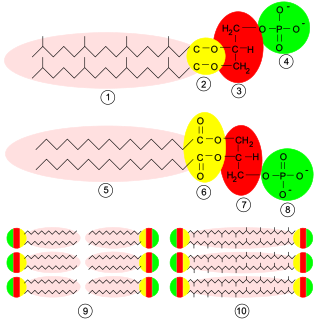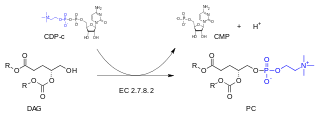| alkylglycerophosphoethanolamine phosphodiesterase | |||||||||
|---|---|---|---|---|---|---|---|---|---|
| Identifiers | |||||||||
| EC no. | 3.1.4.39 | ||||||||
| CAS no. | 62213-15-4 | ||||||||
| Databases | |||||||||
| IntEnz | IntEnz view | ||||||||
| BRENDA | BRENDA entry | ||||||||
| ExPASy | NiceZyme view | ||||||||
| KEGG | KEGG entry | ||||||||
| MetaCyc | metabolic pathway | ||||||||
| PRIAM | profile | ||||||||
| PDB structures | RCSB PDB PDBe PDBsum | ||||||||
| Gene Ontology | AmiGO / QuickGO | ||||||||
| |||||||||
The enzyme alkylglycerophosphoethanolamine phosphodiesterase (EC 3.1.4.39) catalyzes the reaction
- 1-alkyl-sn-glycero-3-phosphoethanolamine + H2O 1-alkyl-sn-glycerol 3-phosphate + ethanolamine
This enzyme belongs to the family of hydrolases, specifically those acting on phosphoric diester bonds. The systematic name is 1-alkyl-sn-glycero-3-phosphoethanolamine ethanolaminehydrolase. This enzyme is also called lysophospholipase D. This enzyme participates in ether lipid metabolism.





